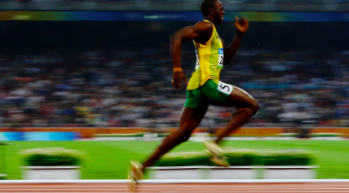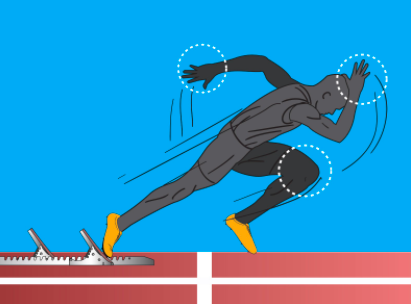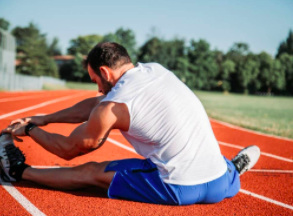Speed and Patience - How Months of Training Leads to an Eleven Second Race
“Worrying gets you nowhere. If you turn up worrying about how you’re going to perform, you’ve already lost. Train hard, turn up, run your best and the rest will take care of itself.” - Usain Bolt, Olympian
“Speed. Faster than fast. Quicker than quick. I am lightening.” - Lightning McQueen, Fictional Racing Car
“If you have confidence in yourself and in the way you train, the results will speak for itself.” - Peter Zappas, High School Track Coach
Eleven seconds (or hopefully quicker) and it’s over. Sounds simple, right? Just run in a straight line as fast as you can until you cross the finish line, and that’s it, right? Wrong. Training for the 100-meter dash actually requires months of hard work, tedious footwork and body motion training, countless tinkering with your stance measurements, and lifting and conditioning exercises. It also requires a lot of mental exercises to stay focused and to increase confidence. It may be cliche, but confidence is key.
Stretching and Mobility Sessions:
Beginning with footwork and body motion training, there are countless details that have to be accounted for if you want to run a successful 100-meter dash. First, you have to start with tedious mobility sessions and stretches to improve flexibility. If you’re wound up tighter than a drum, your range of motion won’t be as free, and your body will tense up and cause your strides to be shorter and more frequent, wasting valuable energy. Flexibility and mobility sessions can be extremely painful. Personally, these sessions were my least favorite as it took me weeks before I could even touch my toes. However, stretching and warming up the body every day in both dynamic and static exercises can go a long way in improving range of motion, agility, and speed.
Foot Measurements:
“Runners, take your marks...Set...BANG!”
When you hear those words and the long, nerve-racking pause before the gunshot, you want to make sure your feet are in the right position off the blocks. This is extremely important for multiple reasons. First, you want your dominant leg to be placed back behind the other leg, with your less-dominant leg upfront on the blocks. That way, when you start the race, your power leg swings up through the air and gives you a boost. Another reason it’s important to get these tedious foot measurements right is that you have to be in a comfortable position while in your stance. If you find yourself in an awkward and unbalanced position, you may wobble, flinch, or fall off the blocks—all of which would result in an immediate disqualification, which is every sprinter’s worst nightmare.
Body Motion Training:
A lot of technique and practice goes into the first few seconds of the race before it becomes an all-out sprint. First, you have to make sure that when you come out of the blocks at the start of the race, your chest and head remain low and angled towards the ground. That may sound counter-intuitive, but if you spring up straight and tall right away, you’ll lose a lot of your startup speed. The goal of keeping your head and chest lowered at an angle is to ease into your sprinting stance and retain the startup speed that your power leg gives you. I remember going to the track before big meets and practicing coming out of the blocks for hours and hours. It was definitely repetitive, but it enforced important techniques. After about ten meters, your head should be fully up, with your body still leaning slightly forward to maintain momentum. Finally, it is also important to not tighten your hands into a fist when sprinting. It is key to keep your body relaxed. If you scrunch up your face, tighten your hands into fists, or flex your neck while running, it is all leading to a waste of valuable energy during the race. If you keep your body relaxed while focusing your power and energy on your legs and pumping your arms, you will save energy and increase speed.
Psychological Techniques:
The mental and psychological side of competing and training is just as important as the physical. It’s extremely important to keep your body in shape through weight training, stretching, and good eating habits. However, having positive mental health, patience, confidence, and the ability to keep your body calm and relaxed can sometimes make a difference between winning and losing a race. It may sound cliche, but it’s true.
Breathing exercises and techniques can become of great use to a sprinter. The nerves before a race can routinely be insurmountable, leading to nausea, lack of confidence, physical trembling, or shortness of breath. Taking a few minutes to control your breathing can be very helpful in calming rapidly growing nerves. This can help segue a sprinter into a more relaxed, tranquil state of mind before a race. This will in turn increase confidence and awareness.
I remember so many times looking at other competing sprinters while warming up before a race. Most of them were bigger than me half the time. A lot bigger, and, by the looks of their muscles, a lot stronger too. Early in my track career, this would shatter my confidence, and, even though I didn’t know it at the time, I was basically out of the race before it even started. As I got older and I had more races under my belt, I learned that sizing up your opponents can only leave negative space in your mind. To maintain confidence and relaxation, it is important to only focus on yourself and no one else. Focusing on others and their pending achievements only welcomes room for distraction and mental fogginess. Focusing on yourself and your goals before a race will increase focus.
If you’re a track and field athlete, or if you’re looking to join the sport of racing, I hope these pointers are helpful! There’s a lot more technique and movements that go into sprinting than people think, but these little tips and details will help increase speed, power, and balance during a race!
Works Cited
-, A. M., By, -, Asad MeahMy name is Asad Meah, Meah, A., & Meah, M. N. (2017, August 04). 35 Inspirational Usain Bolt Quotes On Success. Retrieved from https://www.awakenthegreatnesswithin.com/35-inspirational-usain-bolt-quotes-on-success/
Adefioye, R. (2021, April 19). 15 Static Stretches to Totally Enhance Your Workout Routine. Retrieved June 1, 2021, from https://www.lifehack.org/797461/static-stretching
WikiHow. (2020, February 16). How to Use Starting Blocks. Retrieved June 1, 2021, from https://www.wikihow.com/Use-Starting-Blocks
Goldberg, H. (2017, May 26). Usain Bolt, Fastest Man In The World, Has Never Run A Mile. Retrieved June 1, 2021, from https://www.self.com/story/usain-bolt-fastest-man-in-the-world-has-never-run-a-mile



